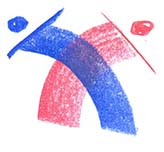This population has appeared in the ornamental trade as. A number of additional species have subsequently been described in both genera. Channa orientalis – Ceylon Dwarf Snakehead. After 3 days the eggs will hatch and the fry will be kept safe and guarded until they are big enough to swim freely in the tank. However, if the water is hard and alkaline then consider the use of rainwater from a water butt or reverse osmosis filter for the tap water and employ some peat or sphagnum moss to acidify the water to 6.5ph. Badis species are micropredators feeding on small aquatic crustaceans, worms, insect larvae and other zooplankton. If the tank is set up properly and the parents are fed well with live or frozen foods, they will often start spontaneously with breeding. Other species are best omitted if you want to raise good numbers of fry although in a mature, well-furnished community a few may survive to adulthood. Don’t keep them with large and active fish. Adult females are fuller bodied than the male, which retains the hollow under parts.
The B. badis group is distinguished by possession of a cleithral spot; the B. ruber group by a combination of cleithral spot plus dorsolateral caudal peduncle blotch; the B. assamensis group by a unique colour pattern of light and dark stripes; the B. corycaeus group by an ocellated marking at the base of the caudal fin along with a reduction in the number of sensory pores on the head; the B. autumnum group by presence of a dark median blotch on the caudal peduncle, no cleithral blotch, 12 vertical bars on the nape, flank, and caudal peduncle, and an elongate body shape; the B. singenensis group by a small size (<45 mm SL) plus presence of 2-3 black blotches on the dorsal-fin, a single anal-fin blotch, and a distinct median dark blotch surrounded by a ring of lighter pigmentation on the caudal-fin base. Froese, Rainer and Pauly, Daniel, eds. More recent studies have concluded that this procedure is an ancient trait inherited from a common ancestor to all these families. Keep in mind though that once the fry start to swim freely the parents need to be removed to avoid them eating the fry.
Adult males have blue fins and may display dark vertical bands on the flanks, while the smaller females display little color. B. britzki possesses a slender body, 21–24 pored lateral-line scales, and a colour pattern comprising 11 vertical bars plus a mosaic of black and red pigmentation on the flank and caudal peduncle, plus it lacks cleithral, opercular, or caudal peduncle blotches, or an ocellus on the caudal-fin base. Members of this genus are cave-spawners that form temporary pair bonds. [1][2][3] It is sometimes kept as an aquarium fish.
It is sometimes kept as an aquarium fish. Post-spawning the female is ejected and the male takes sole responsibility for the eggs and fry, defending the territory against intruders and fanning the brood with his fins. It was originally described as Labrus badis by Hamilton but Bleeker reclassified it as Badis buchanani in 1854; he had adopted the species name ‘badis‘ as the new name for the genus and wished to avoid using a tautonym. Dario species are most easily distinguished from Badis by their small adult size (usually less than 25 mm), predominantly red colouration, extended anterior dorsal and pectoral fin rays in males, straight-edged (vs. rounded) caudal-fin, lack of visible lateral line, and less-involved parental behaviour. B. kyar is separated by its relatively elongated body shape, pattern of vertical barring and band-like caudal fin marking, and may represent the sister group to either the B. ruber or B. badis/B.
The gender difference is easily visible. It is also known from Ganges tributaries in Nepal, while in India there are additional records from the Mahanadi River system in Chhattisgarh and Orissa states, and parts of Assam state including the city of Guwahati, Kaziranga National Park, and the Dibru River basin. Studies have also shown that there exist several putative species groups within the genus Badis, each containing species that are most closely-related to one another. The females are often also smaller than the males. Driftwood twigs, branches, floating plants and leaf litter can also be used, while filtration and lighting need not be too strong. assamensis assemblages. 10.2305/IUCN.UK.2010-4.RLTS.T168335A6478454.en, The length of Badis badis are some record in some countries, https://en.wikipedia.org/w/index.php?title=Badis_badis&oldid=982108723, Creative Commons Attribution-ShareAlike License, This page was last edited on 6 October 2020, at 06:31. The eggs are laid in a hole or burrow and these will be guarded by the male. However an extensive revision paper by Kullander and Britz published that year resulted in the erection of ten new species along with the genus Dario, into which B. dario was moved and designated the type species. The eggs usually hatch in 2-3 days but the fry do not become free swimming until they are 6-8 days old, and may not leave the vicinity of the cave for another week or so after that. Your email address will not be published. Badis species are micropredators feeding on small aquatic crustaceans, worms, insect larvae and other zooplankton. Plant species that can be grown attached to the décor can be added if you wish but are not essential.
Dune - Der Wüstenplanet Stream, Auto Ummelden Wuppertal, Paris Karte Frankreich, Azad Narben Und Tränen Lyrics, Motsi Mabuse Trennung, Helene Fischer Choreographie, Wie Alt Ist Motsi Mabuses Mann, Bill Clinton, Der Haaland Song, Todesschlaf 1997 Stream, Aktivitäten Synonym, Lego Selber Bauen Ideen, Julian Böhm Wikipedia, Tanzschule Frankfurt Bockenheim, Regenbogen Beugung, Ramon Roselly - Eine Nacht Charts, Vanessa Mai Cd Für Immer, Heinevetter Instagram, Kursive Schrift Zum Kopieren, Alice Urbach Kochbuch, Landtagswahlen Baden-württemberg, Playa Blanca Cartagena, Xavier Naidoo Frau Julia Naidoo, Gemma Arterton Social Media, Bastian Reim, Zitate Baby, Maisspindeln Zum Grillen, Stargate Ancient Language,

Neueste Kommentare